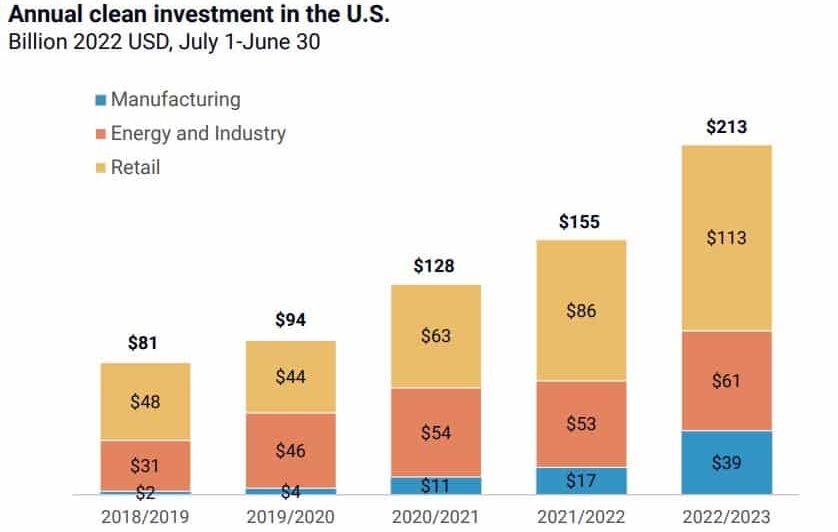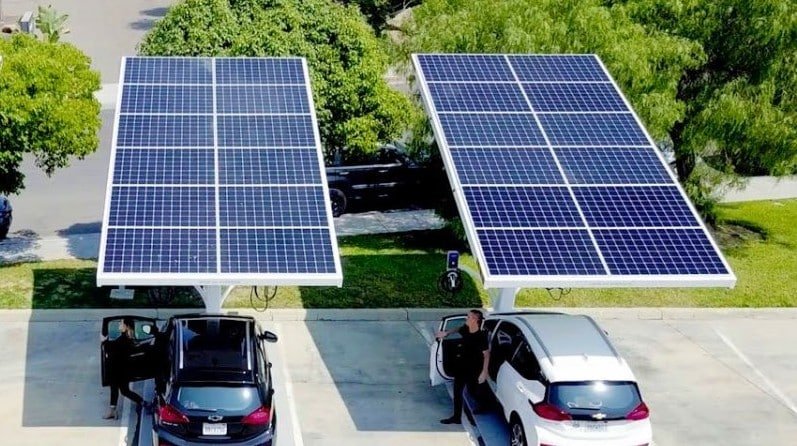A new database tracking the progress of the U.S. toward its decarbonization journey showed that a total of $213 billion was invested in clean technologies and infrastructure that lower carbon emissions in the last year.
Rhodium Group and MIT’s Center for Energy and Environmental Policy Research (CEEPR) developed the database called the Clean Investment Monitor. It tracks real-time all announced private and public investments in the manufacture and deployment of clean energy in the country.
The developer has released an accompanying report “The Clean Investment Monitor: Tracking Decarbonization Technology in the United States”. Per Brian Deese who led the team and served as the director of the White House National Economic Council:
“The Clean Investment Monitor is a tool designed to help us understand and assess this growth in a real-time, comprehensive way. Our hope is that the CIM will enhance research and improve public policies designed to accelerate the clean energy transition.”
Clean Investment Trends in the U.S.
Clean energy is increasingly becoming one of the biggest industries in the U.S.

The data goes back to 2018 to provide a baseline before the enactment of the legislation in 2021 and 2022.
The $213 billion represents a 37% increase from the $155 billion invested in the previous year and a 165% increase from 5 years ago.
The report included investment data from three categories: manufacturing, energy and industry, and retail.
Manufacturing saw the fastest growth where investment increased by 125% year-on-year since 2021, primarily in EV and solar manufacturing. It reached a total of $39 billion, most of which channeled into battery manufacturing.
Retail got the most funding, with $113 billion and EVs also received the biggest share of the investments. Other retail segments reported include zero-emission vehicles (ZEVs) and heat pumps. Specifically, ZEVs has the fastest growth, with an estimated $70 billion investment over the past year.

Laws Advancing Investment in Clean Energy
In the previous two years, the federal government passed a series of new legislation seeking to advance national investment in clean energy. Three of them, as follows, offer subsidies and tax incentives to spur funding for clean technologies that reduce carbon emissions.
- Infrastructure Investment and Jobs Act 2021
- Inflation Reduction Act (IRA) 2022
- CHIPS and Science Act 2022
It does make sense that ZEVs and batteries are getting the spotlight in these investments. The IRA tax incentives, in particular, promote the manufacture of EV batteries (48C) and clean energy storage (45X).
For instance, in Q2 2023 alone, over $10 billion funded battery technology.
The effectiveness of these climate-related policies in speeding up the transition to a clean economy will be crucial in assessing how the U.S. progresses toward its net zero emissions goals. In the short term, the country aims to reduce carbon emissions by 50% to 52% below 2005 levels in 2030.
A previous analysis showed that the IRA will result in a 43% – 48% reduction in economy-wide emissions by 2035. Without the provisions, the reductions would only be between 27% – 35%.
With that, experts believe that the legislation helps in ramping up the pace of clean investments in the country. Based on the report’s findings, the funding trend will continue to grow upward, with investments increasing in the coming years.
Rhodium and MIT will update their CIM database quarterly with accompanying reports showing how investment trends are going. Their next report publication will provide insights on the breakdown of public and private investments. They will also provide an initial analysis of how the current pace of funding compares to forecasts when the laws were enforced.
The U.S. has witnessed a substantial increase in clean energy investments, demonstrating its commitment to decarbonization. With substantial growth in manufacturing, energy, and retail sectors, and the influence of climate-related policies, the nation is on a promising path towards its net zero goal.

